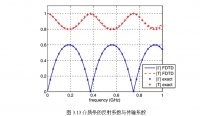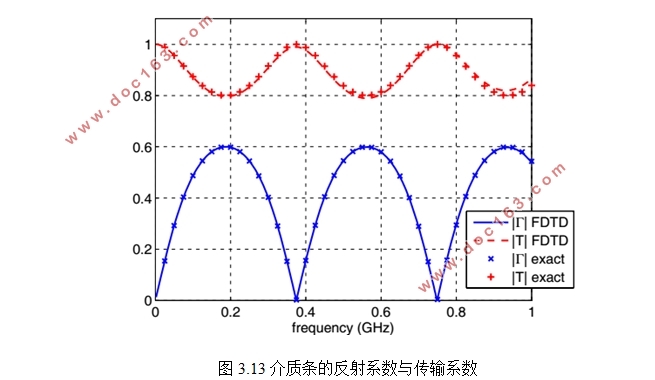MATLAB模拟FDTD的典型介质体散射的仿真

MATLAB模拟FDTD的典型介质体散射的仿真(论文12000字)
摘要:为了研究电磁波在现实中的传播特点,也为了研究一些计算电磁场的方法,本文介绍了一种目前为止应用广泛的并且发展前景特别好的时域数值计算的方法:时域有限差分算法(FDTD)。时域有限差分法算法是一种基于电磁场微分方程的有效解决电磁场相关问题的数值计算方法,首先,给出了麦克斯韦差分方程的推导,还有数值稳定性和色散性条件的探讨以及边界条件的设置。通过对散射场体系的了解,进而对散射场公式进行MATLAB仿真,结合FDTD对自由空间中的介质球、介质条等目标进行散射仿真,根据给定的问题空间计算出RCS,最后对比用其他方法得出的仿真结果,根据仿真结果我们可以看出实际值与使用FDTD仿真出的结果十分吻合。
关键词:时域有限差分法;激励源; 散射场;
The MATLAB simulation of FDTD simulation of typical scattering medium body
Abstract:In order to study the propagation characteristics of electromagnetic waves in reality, and to study some methods of calculating electromagnetic fields, this paper introduces a method of time domain numerical calculation which is widely used and has a promising future. Time domain finite difference algorithm (FDTD) The The time-domain finite difference method is a numerical method tosolve the problem of electromagnetic field-related problems based on the electromagnetic field differential equation. Firstly, the derivation of Maxwell's difference equation is given, and the numerical stability and dispersion conditions are discussed and the boundary conditions Set up. Based on the understanding of the scattering field system and the MATLAB simulation of the scattering field formula, the FDTD is used to scatter the targets in the free space, and the RCS is calculated according to the given problem space. Finally, compared with other methods According to the simulation results, it can see that the actual value is in good agreement with the result of using FDTD simulation. [资料来源:www.doc163.com]
Key words:Finite-differenceTime-domain ;Excitation source; Scattering field;
[资料来源:www.doc163.com]

目 录
1绪论.................................................................................................................................................3
1.1选题的目的和意义..................................................................................................................3
1.2国内外研究现状 3
1.3本文研究内容 3
2 时域有限差分算法的基本理论 4
2.1时域有限差分法的介绍 4
2.2时域有限差分法在实际中的相关应用 4
2.3 时域有限差分法数值计算的优势 4
2.4时域有限差分法的基本点 5
2.4.1Yee元胞 5
2.4.2区的划分 5
2.4.4数值色散 ...6 [资料来源:https://www.doc163.com]
2.4.5吸收边界条件 6
2.4.6近-远场变换 6
2.5麦克斯韦旋度方程及本构关系 6
2.5.1麦克斯韦方程组 7
2.5.2 Yee氏元胞网格 8
2.6.1激励源类型 9
2.6.2激励源的设置 10
3 散射体公式 12
3.1散射场基本方程 12
3.2入射平面波 13
3.2.1平面波的介绍 13
3.2.2平面波的产生原理 13
3.2.3入射平面波的表达式 14
3.3散射场仿真举例 16
3.3.1由介质球引起的散射 17
3.3.2由介质条的反射与传输系数引起的散射 20
4结果与展望 21
参考文献 22
致谢 23 [版权所有:http://DOC163.com]
